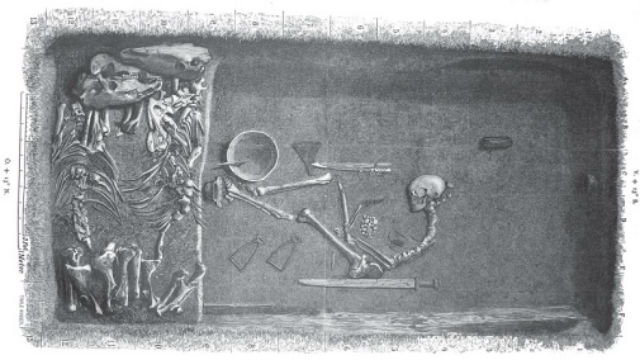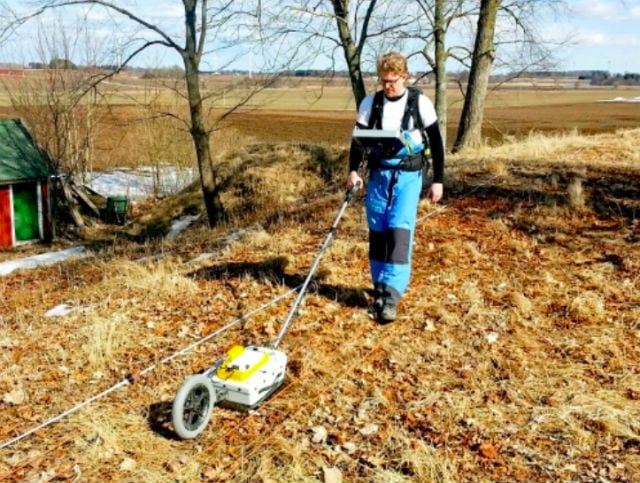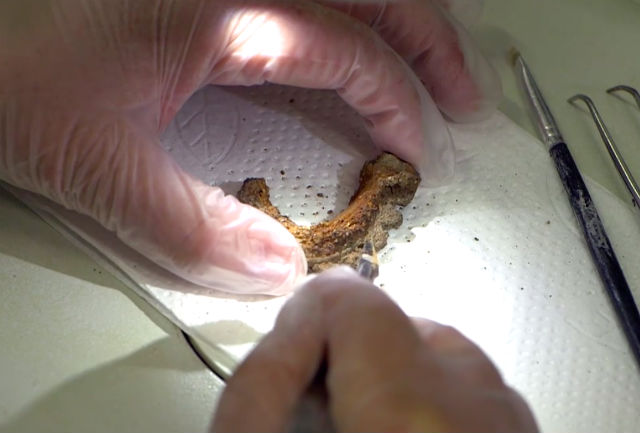VIDEO: Five astonishing Viking finds uncovered by Stockholm University
It seems only fitting that some of the most remarkable Viking finds have been discovered by researchers at Stockholm University. After all, it is just a stone’s throw from Birka, a Viking city on the island of Björkö, where the university's archeologists are always digging up the past.

For more than a millennium, people around the world have been fascinated by the Vikings. The ancient Norse seafarers, with their insatiable appetite for drinking and plundering, seem more like they belong in a myth than an actual history book.
But Vikings did indeed once roam the earth and nowhere is there more evidence for their existence than in their native Nordic countries. Over the years, archeologists and researchers at Stockholm University have discovered some fascinating finds that shed light on the way that the Vikings lived, loved and died.
Presenting five of the most amazing Viking finds uncovered by Stockholm University.
Not half the man she used to be
Fans of the History Channel’s Vikings may have occasionally doubted the plausibility of the ferocious ‘shield maidens’ depicted on the show. But, as researchers at Stockholm University revealed, battle was not an exclusively all-male activity and women too could climb the military ranks.
Archeologists and historians had assumed for over a century that the remains of a person found buried in Birka, along with their weapons and horses, belonged to a man. But in 2017 osteology and DNA tests found that he was a she and that she was a high ranking military leader.
 Image: Stockholm University
Image: Stockholm University
Stockholm University’s Jan Storå says, “This burial was excavated in the 1880s and has served as a model of a professional Viking warrior ever since.”
The future may be female but, as this amazing discovery shows, it turns out the past was too!
Feast your eyes on this
It’s no secret that the Vikings enjoyed a good feast (after all, what was Valhalla but a supersized feast hall?). And where better to hold a big fat Viking feast than a great hall designed for just such an occasion?
 Photo: Stockholm University
Photo: Stockholm University
In 2014, a 50-metre-long Viking feasting hall was identified in Vadstena, a city in southern Sweden. Long mistaken for a burial mound, archeologists revealed that the Aska barrow was in fact, most likely, the home of a noble family whose graves had been excavated nearby.
Archaeologists from Umeå University and Stockholm University worked together on the project, using a non-invasive ground-penetrating radar to locate and map the foundations of the hall.
“Our investigation demonstrates that non-invasive geophysical measurements can be powerful tools for studying similar building foundations elsewhere,” said Andreas Viberg of the Archaeological Research Laboratory at Stockholm University. “They even allow scholars to estimate the date of a building without any expensive excavations.”
Find out more about the research underway at Stockholm University
I’ll be Birka
One of history’s greatest mysteries was the long-lost location of a grand manor owned by Heriga, the royal bailiff of Viking trade centre Birka. For years, archeologists scratched their heads and wondered how one of the most important Vikings halls could have seemingly vanished into thin air.
After discovering what researchers believed were the terraces of several houses in the spring of 2016, they (figuratively) dug deeper to find out more. Using that same ground-penetrating radar, they produced a high-resolution geophysical survey which revealed what turned out to be Heriga’s hall, which can be dated to sometime around 810 AD.
“The results highlight the benefits of using non-intrusive geophysical surveys for the detection of archaeological features and, once again, prove to be an invaluable tool for documenting Iron Age building remains in Scandinavia”, says Andreas Viberg, researcher at the Archaeological Research Laboratory at Stockholm University.
Dragon up the past
Viking folklore was awash with dwarves, trolls, giants and dragons, with the mythical beasts heavily influencing Norse art.
 Photo: Still taken from a Stockholm University video
Photo: Still taken from a Stockholm University video
Back in 2015, when archeologists began working on a layer that had once been a lake in the Viking town of Birka, they found what turned out to be a small bronze dragon head. The dragon head would once have been placed on an ancient costume needle although the needle had long since disintegrated.
“This dragon head has become a symbol of the Viking Age”, says Lena Holmquist, lecturer at the Department of Archaeology and Classical Studies at Stockholm University. “For many years, there has been an ongoing debate as to where the dragon head was made. With the discovery, we hope to show that it was produced here in Birka.”
Find out more about Stockholm University
Dead ringer
How much can an ancient ring really tell us about intercultural relations? A whole lot, actually.
Using a scanning electron microscope, Stockholm University biophysicist Sebastian Wärmlander discovered an Arabic inscription on the coloured glass of a ring found in a Viking women’s grave. An expert of old Kufic translated the inscription, which he concluded to read 'for/to Allah’.
The 2015 discovery of the inscription spoke volumes, as did the mint condition of the ring. Scientists have suggested that the ring was new when it was buried with the woman and that perhaps she, or someone she knew, had recently acquired it on a journey to the Islamic world. This shows that the Vikings did venture into the Islamic caliphate, corroborating ancient tales about ties between the two worlds.
This article was produced by The Local Creative Studio and sponsored by Stockholm University.
This content was paid for by an advertiser and produced by The Local's Creative Studio.

Join the conversation in our comments section below. Share your own views and experience and if you have a question or suggestion for our journalists then email us at [email protected].
Please keep comments civil, constructive and on topic – and make sure to read our terms of use before getting involved.
Please log in here to leave a comment.